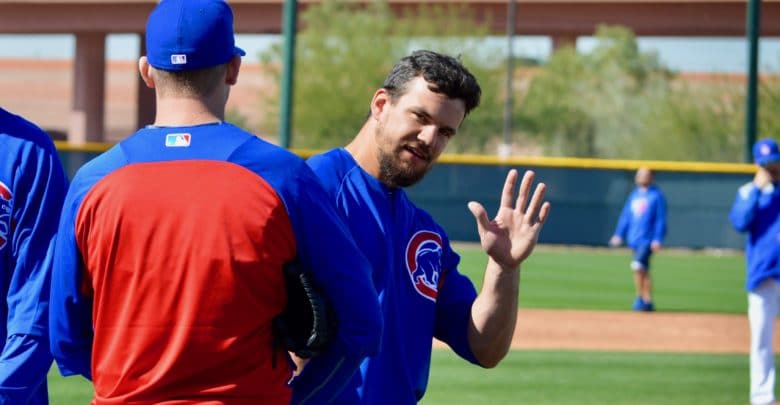
Time for NL to Adopt DH, End AL’s Built-In Advantage
Daniel Murphy served as the designated hitter Sunday as the Cubs beat White Sox 6-1 (lowering their magic number to 5, woohoo). Murphy will be the Cubs’ last DH in 2018, unless they make the World Series. But that should not be the case, because the National League (NL) needs to adopt the DH.
The DH rule creates a systematic advantage for the American League (AL) over the NL. I am not endorsing the DH as a good rule, that is a completely different matter. The relevant issue is that the NL is institutionally disadvantaged by the DH rule, and that needs to end.
The DH disadvantages the NL economically in free agency and in on-field performance due to increased pitcher injuries. AL teams can outbid their NL counterparts in free agent contract lengths, knowing that they can obtain 2-3 more years of value from an aging slugger as a DH. Lots of 35-40-year-old players are still valuable batters, but fewer remain valuable fielders.
In theory, some of this advantage should be negated by the extra value NL teams can derive from good-hitting pitchers. For example, top hitting pitchers like Zach Greinke, Madison Bumgardner, and Jake Arrieta can produce 0.5 oWAR a season. At the going market rate of $8 million per WAR, that amounts to an extra $4 million in value to NL teams. As such, Senior Circuit outfits could theoretically outbid AL teams by that same amount per season for top-hitting pitchers.
Yet, this advantage rarely works out for the NL in reality. The pool of top-hitting pitchers is small and the NL lacks information on half the market because there are no batting stats for AL pitchers, effectively robbing the NL of at least half of its one advantage. Also, NL teams cannot ask for discounts for unusually weak-hitting pitchers, again placing them at a disadvantage relative to AL teams.
The financial advantages gained in free agency by the AL, however, pale in comparison to the health benefits AL teams derive from the DH. Every year pitchers are injured at the plate and on the basepaths. Pedro Strop’s injury last week comes to mind, but is far from unique. Adam Wainright was lost for 2015 to an Achilles injury suffered during an at-bat. Likewise, Cubs fans may recall the first of Mark Prior’s many trips to the DL started with a shoulder injury from a 2003 baserunning collision.
The wear and tear of all those extra incidents takes their toll over a full season on NL pitchers. The current rules are analogous to the NFL mandating that every NFC quarterback be submitted for use as a tackling dummy for 15 minutes after every game, while sparing their AFC counterparts. How even would future Super Bowl odds be? The DH also allows managers to rest regular starters by allowing them the occasional game out of the field. Over a 162 game season, having a few days off keeps players fresher for the playoffs. Basically, the NL is walking into the World Series a little more tired and bruised than the AL, year in and year out.
Then there are the unique situations like Shohei Ohtani. As you may recall, virtually every team in baseball tried to convince Ohtani (the likely AL Rookie of the Year) to sign with them this past offseason. Unbeknownst to everyone, Ohtani knew his UCL was partially frayed during this process. He was therefore not interested in signing with an NL team, where he would be forced to play outfield during non-pitching days. Consider that for a moment. A generational talent was largely off-limits to half the league because it plays by different rules.
One could argue that the better solution would be to remove the DH from both leagues. But this ignores that no professional baseball league outside the US has pitchers hit, not to mention that the players union will never agree to give up 15 high-paying roster spots. The only realistic scenario for evening the playing field is for the NL to adopt the DH.
As a bonus, the current Cubs roster would benefit from this move immensely. Outside of Jon Lester, the Cubs do not have single above-average-hitting pitcher on the roster. The Cubs also have too many quality position players and not enough spots to play them.
On any given day, Kyle Schwarber or Ian Happ or Ben Zobrist is on the bench. Few NL teams can boast the same “problem.” And that is before the Cubs go after Manny Machado or Bryce Harper this offseason, further clogging the field. Bottom line, the Cubs would benefit from a DH today and for the next few years.

